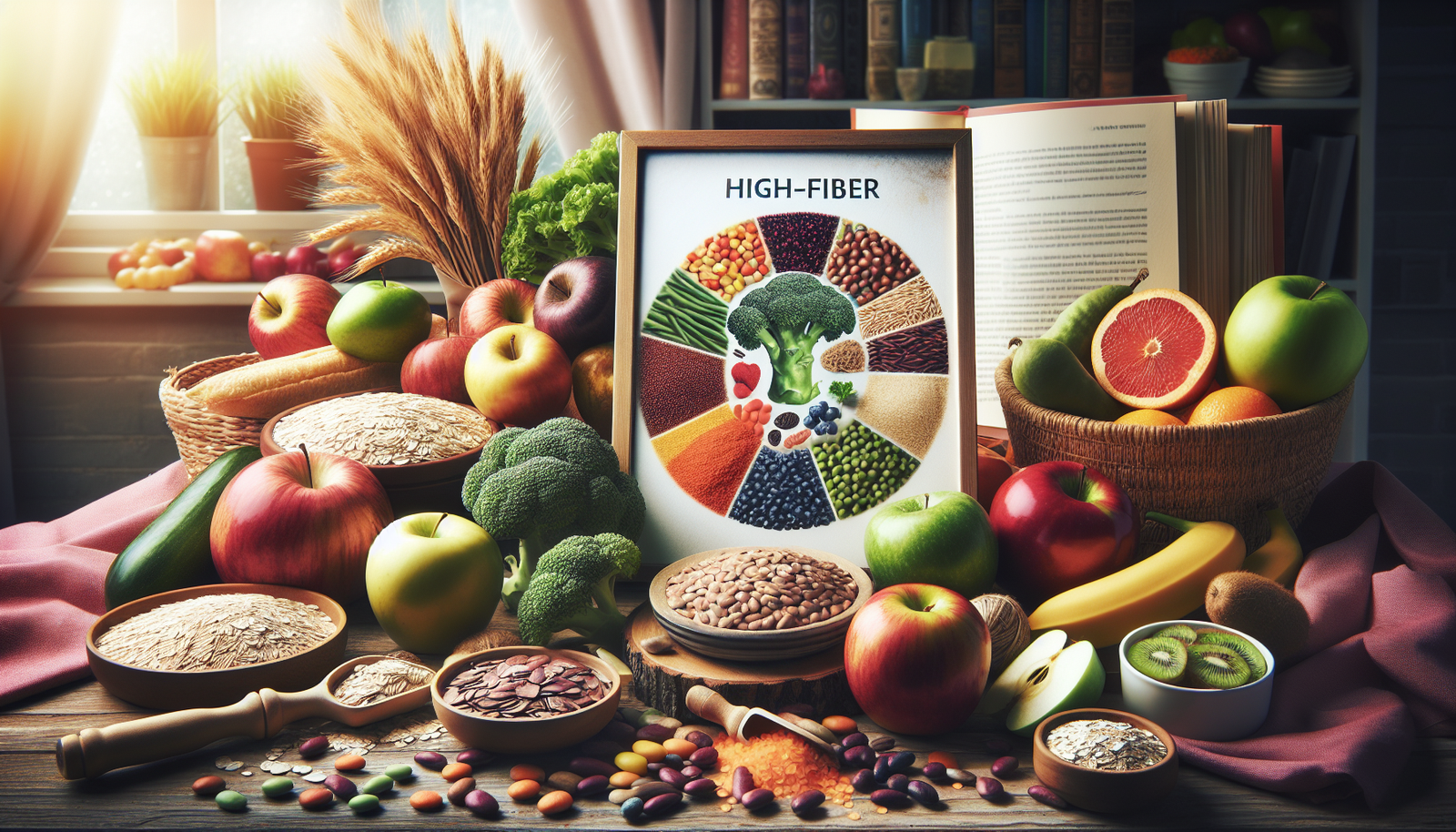
The Role of Fiber in Carbohydrates: How to Get Enough
Fiber in carbohydrates plays a crucial role in digestive health, yet many people struggle to get enough in their diets. With studies showing that fiber can help prevent heart disease and enhance gut health, understanding how to incorporate more fiber-rich carbohydrates is vital. This article will explore the types of fiber found in carbohydrates, how they benefit your body, and practical methods to increase your intake. By making simple dietary adjustments, you can significantly boost your fiber consumption and improve overall health. Discover easy ways to naturally enhance your diet with these essential nutrients.
Understanding the Importance of Fiber in Your Diet
Fiber plays a crucial role in maintaining overall health. It’s often overlooked but is essential for a balanced diet. Understanding its benefits can help you make informed dietary choices that support your well-being.
What is Dietary Fiber and How Does it Benefit Your Health?
Dietary fiber is a type of carbohydrate that the body cannot digest. While most carbohydrates are broken down into sugar molecules, fiber remains intact as it passes through the digestive system. This unique characteristic is what makes fiber so beneficial to health. It supports a healthy digestive system by adding bulk to stool, which aids in regular bowel movements. Additionally, fiber helps regulate blood sugar levels by slowing the absorption of sugar, thus preventing rapid spikes. It also lowers cholesterol levels, reducing the risk of heart disease. Overall, incorporating fiber into your diet can lead to improved health outcomes and reduced risks of various chronic conditions.
Types of Fiber: Soluble vs. Insoluble Fiber Explained
Fiber is categorized into two main types: soluble and insoluble. Soluble fiber dissolves in water and forms a gel-like substance in the gut. This type of fiber helps reduce blood cholesterol and glucose levels. Common sources include oats, peas, beans, apples, and citrus fruits. Insoluble fiber does not dissolve in water. It promotes the movement of material through the digestive system and increases stool bulk, making it beneficial for those struggling with constipation. Whole-wheat flour, wheat bran, nuts, and vegetables are excellent sources of insoluble fiber. Both types are essential for good health, and a well-balanced diet should include a variety of fiber sources.
The Connection Between Fiber Intake and Digestive Health
Adequate fiber intake is vital for a healthy digestive system. It aids in the prevention of constipation by softening stool and increasing its bulk. This helps the bowel move more efficiently, reducing the risk of developing diverticular disease. Fiber also serves as a prebiotic, providing nourishment for the beneficial bacteria in the gut. These bacteria play a significant role in maintaining gut health, which is linked to improved immune function and reduced inflammation. Additionally, fiber’s ability to regulate bowel movements helps reduce the risk of colon cancer. Including fiber-rich foods such as fruits, vegetables, whole grains, and legumes can support a healthy digestive tract and overall health.
How Fiber-Rich Carbohydrates Aid in Weight Management
Fiber-rich carbohydrates are an ally for those looking to manage their weight. They play a crucial role in appetite control and metabolism, making them an essential part of any weight management plan. Let’s explore how they can aid in maintaining a healthy weight.
Appetite Control: Fiber’s Role in Promoting Satiety
Fiber is known for its ability to promote satiety, the feeling of fullness after eating. This is because fiber takes longer to chew and digest, which slows down the eating process and allows the body to register fullness sooner. As a result, consuming high-fiber foods can help reduce overall calorie intake by curbing the desire to eat more. Foods rich in fiber, such as whole grains, fruits, and vegetables, are not only filling but also low in calories, making them ideal for weight management. By incorporating more fiber into your meals, you can naturally control your appetite and support your weight loss goals.
Fiber and Metabolism: How It Impacts Energy Levels
Fiber impacts metabolism by stabilizing blood sugar levels. When you consume fiber-rich foods, the absorption of sugar is slowed down, preventing the rapid spikes and crashes in energy that are common with refined carbohydrates. This leads to more consistent energy levels throughout the day, helping you stay active and alert. Additionally, fiber supports a healthy metabolism by promoting the growth of good bacteria in the gut, which plays a role in nutrient absorption and energy production. By boosting metabolic health, fiber can aid in weight management and enhance overall vitality.
Incorporating Fiber Without Increasing Calories
Adding fiber to your diet doesn’t mean increasing your calorie intake. Many fiber-rich foods are naturally low in calories and can easily be included in your meals. Start by choosing whole-grain options over refined grains, such as whole-wheat bread, brown rice, and quinoa. Incorporate more fruits and vegetables into your daily meals and snacks. These foods are not only high in fiber but also rich in essential nutrients. Legumes, such as beans and lentils, are another excellent source of fiber and can be added to salads, soups, and stews. By focusing on these nutrient-dense foods, you can increase your fiber intake without adding excess calories.
Practical Ways to Increase Fiber Intake Through Carbohydrates
Boosting your fiber intake doesn’t have to be complicated. With a few simple dietary changes, you can increase your fiber consumption through carbohydrates. Let’s look at some practical ways to include more fiber in your diet effectively.
Top High-Fiber Carbohydrate Foods to Include in Your Diet
There are numerous high-fiber carbohydrate foods to choose from, making it easy to increase your fiber intake. Some of the best options include:
- Whole grains: Oats, barley, quinoa, brown rice, and whole-wheat pasta are excellent sources of fiber.
- Fruits: Apples, pears, berries, bananas, and oranges provide fiber along with essential vitamins and minerals.
- Vegetables: Broccoli, carrots, sweet potatoes, and Brussels sprouts are fiber-rich and versatile in various dishes.
- Legumes: Lentils, chickpeas, black beans, and kidney beans are not only high in fiber but also protein-packed.
- Nuts and seeds: Almonds, chia seeds, and flaxseeds offer a good amount of fiber and healthy fats.
Incorporating these foods into your meals can significantly boost your fiber intake and support overall health.
Meal Planning Tips for a Fiber-Enriched Diet
Planning meals with a focus on fiber can make it easier to meet your daily intake goals. Start by incorporating a serving of fruits and vegetables at every meal, whether in salads, smoothies, or side dishes. Choose whole-grain options for bread, pasta, and rice to increase fiber content. Add legumes to your soups, stews, and salads to boost protein and fiber simultaneously. Snack on nuts, seeds, or fresh fruit instead of processed snacks to increase fiber and nutrient intake.
Additionally, consider experimenting with fiber-rich recipes to keep meals exciting and varied. By making these small adjustments, you can effortlessly create a fiber-enriched diet that supports your health.
Daily Fiber Recommendations: How Much Fiber Do You Really Need?
The amount of fiber each person needs can vary based on age, gender, and health status. However, general guidelines suggest that adult women should aim for at least 25 grams of fiber per day, while adult men should target about 38 grams. For children, the recommended intake is adjusted based on age and caloric needs.
To achieve these recommendations, focus on consuming a variety of fiber-rich foods throughout the day. Begin with a high-fiber breakfast, such as oatmeal topped with fruit and nuts. For lunch and dinner, include generous portions of vegetables and whole grains. Snack on fresh fruit, raw vegetables, or a handful of nuts to keep your fiber intake consistent. By making these dietary choices, you can ensure you’re meeting your daily fiber needs and supporting overall health.
Conclusion
Fiber is a type of carbohydrate that the body cannot digest. It plays a crucial role in maintaining a healthy digestive system. There are two types of fiber: soluble, which dissolves in water, and insoluble, which does not. Consuming sufficient fiber can aid in weight management, lower cholesterol levels, and regulate blood sugar. Foods rich in fiber include fruits, vegetables, whole grains, and legumes.
FAQ
What are the health benefits of fiber in carbohydrates?
Fiber in carbohydrates offers several health benefits, including improved heart health, better blood sugar control, and reduced cholesterol levels. It also plays a role in maintaining a healthy gut, reducing the risk of digestive disorders.
How does fiber in carbohydrates aid in weight management?
Fiber helps control weight by promoting feelings of fullness, which can reduce overall calorie intake. High-fiber foods take longer to chew, giving your body time to signal fullness to your brain, thus preventing overeating.
What foods are high in fiber-containing carbohydrates?
Foods rich in fiber include whole grains like oats and brown rice, fruits such as apples and berries, vegetables like broccoli and carrots, and legumes like lentils and beans. These foods provide a delicious and natural way to increase fiber intake.
How does fiber in carbohydrates impact digestion?
Fiber improves digestion by adding bulk to stool, which facilitates regular bowel movements. It can help prevent constipation and support a well-functioning digestive system.
What is the recommended daily intake of fiber from carbohydrates?
The recommended daily intake of fiber for adults is about 25 grams for women and 38 grams for men. Consuming a variety of fiber-rich carbohydrate foods is key to meeting these recommendations.
How can I increase my fiber intake with carbohydrate-rich foods?
To boost fiber intake, incorporate more whole grains, fruits, and vegetables into meals. Swap out refined grains for whole grains, and add more legumes to your diet. These changes can significantly enhance your fiber consumption.











